Lecture 2 Notes PDF

| Title | Lecture 2 Notes |
|---|---|
| Author | Ken Xie |
| Course | Principles of Finance |
| Institution | University of Melbourne |
| Pages | 5 |
| File Size | 336.7 KB |
| File Type | |
| Total Downloads | 34 |
| Total Views | 110 |
Summary
Lecture 2 Notes...
Description
Lecture 2: Principle of Finance
Ordinary Perpetuities Deferred Perpetuities Ordinary Annuities Growing Perpetuities Growing Ordinary Annuities
Perpetuities: An equal, periodic cash flow that goes on forever The first cash flow occurs at the end of period 1
Present Value of a Perpetuity C PV ( C ∈perpetuity )= r C = payment amount each period R = interest rate
Using value additivity, the present value of a perpetuity is: C C C C PV 0= + +… + 2 3 1+ r ( 1+r ) ( 1+r ) ( 1+r )n 1 1 1 1 PV 0=C∗( + +… ) + 2 3 n 1+r (1+r ) (1+r ) ( 1+r ) 1 1 1 1 1 + +… + As n approaches ∞, approaches n r 1+ r ( 1+r )2 ( 1+r )3 ( 1+r )
[(
)]
Deferred Perpetuity: An equal, periodic cash flow that starts at some future date and then goes on forever 1st cash flow start at some date n=
This perpetuity starts 3 periods after and NO CASH until the end of 3rd period and start of 4th period 1. Pretend it is simply a perpetuity that starts at a later date 2. Discount it back to present value C ( ) r PV 0= n ( 1+r )
( )
NOTE: n is the year of perpetuity starting, NOT the date of the first cash pay-out
Ordinary Annuity: A series of equal, periodic cash flows occurring at the end of each period and lasting for n periods The first cash flow occurs at the end of period 1 The last cash flow occurs at the end of period n
The present value of an ordinary annuity can be obtained as the difference between an ordinary perpetuities and deferred perpetuity PV 0 ( OA )=PV 10 −PV 02 1 C C C 1 PV 0 ( OA )= (1− − = ) r r (1+r ) n r ( 1+r )n
( ) ( )(
)( )
Future Value of Ordinary Annuity: obtained by compounding the present value above to the end n of time period n using ( 1+r )
( Cr )( 1− (1+r1 ) ) ( 1+r) C FV ( OA )= ( )[ ( 1+r ) −1] r
FV n( OA )=
n
n
n
n
#### r=interest rate= the rate at each compounding period, does not have to be annual or monthly Example: Suppose a prize guarantees you $10,000 per year for the next 3 years with the first payment to be made at the end of year 1. How much would you sell the prize for today if the interest rate is 10% p.a.? 3 Year Annuity
Present Value of Deferred Perpetuity
Present Value of Perpetuity
Ordinary Annuity =100,000-75,131.48 = $24,868.52
Example: John charges $2000 per month on his credit card without repayments for the next 24 months. Credit card interest is 18% p.a.. How much money will he be owing on the credit card 25 months from now when he receives her first credit card statement 25 months from now?
### NOT 24 months only, John doesn’t start paying until the 25th month Step 1: Monthly Interest Rates =
0.18 =0.015 % per month 12
Future Value of the 24 months annuity: C 2000 FV 24 = ∗[( 1+0.015 ) 24 −1 ]=$ 57,267 owingat the end of 24 months [ ( 1+r ) n−1] = 0.015 r
( )
(
)
FV at end of 24 months compounded to 25th: FV 25 =57267∗(1+0.015 ) =$ 58,126 owing at the end of 25 months Example 1 cont.: Your friend now owes $58,126 on her credit card has decided to start paying off in a monthly basis, starting next month. If she can only afford to repay $400 every month. How much would she still owe on her credit card by the end of 1 year? (12 months)
IDEA: work out the FV of the current balance after 1 year MINUS the FV of the 400 monthly repayment after 1 year Step 1: The future value of the current balance in 12 months compounding monthly is FV 12 =58126∗(1 +0.015 )12=$ 69497 Step 2: The future value of the $400 repaid every month after 12 months is: C n 400 12 FV 12= ∗[ ( 1+r) −1 ] = ∗[( 1+0.015 ) −1] =−$ 5216 r 0.015
( )
(
)
Step 3: The net amount after 12 months is: 69497− 5216=$ 64281 NOTE: The beginning of period n is the same as the end of period n-1
E.g.: 31/6 and 1/7 The overall effect is to move the annuity back one period to our standard timeline
Example 2: Prize money of a $30 million dollar lottery. Two ways of taking the winnings: 1. $15 million paid today, or 2. $1 million per year starting today for 30 payments Method 1: Value the annuity as if it were an ordinary annuity and adjust it accordingly
1 ∗ 1− ( 1000000 ) 0.08 ( ( 1+ 0.08) )∗( 1+0.08 )=$ 12,158,406
PV 0 ( AD) =
30
Method 2: Calculate the PV of the 29 year annuity and then adds the cash flow in year 0
1 ∗ 1− +1,000,000=$ 12,158,406 ( 1000000 0.08 ) ( ( 1+ 0.08) )
PV 0( AD ) =
30
Growing Perpetuity A series of periodic cash flows occurring at the end of each period and growing at a constant rate forever
Growing Perpetuity: n−1 2 C2 =C1( 1+g ) ,C 3=C 1( 1+ g ) … … Cn =C1 (1+g )
#n-1 not n
The PV of a Growing Perpetuity n−1 C 1 C1 ( 1+g) C 1 (1+g ) 2 C 1 ( 1+g) PV 0= + + …+ + 1+ r ( 1+r )2 ( 1+r )3 ( 1+r )n 2
PV 0=C 1∗[
( 1+ g )n−1 1 + (1+ g ) (1+ g) + + …+ ] 1+ r (1+r ) 2 (1+r )3 ( 1+r ) n
as n approaches infinity, PV0 approaches
1 r−g
PV(growing perpetuity) =
C r−g
Note: r>g, as it is impossible for an investment to grow faster than interest rate forever When g=0, we get an ordinary perpetuity It is possible for g...
Similar Free PDFs

Lecture notes, lecture 2
- 3 Pages

2 - Lecture notes 2
- 5 Pages

Lecture notes, lecture Chapter 2
- 11 Pages
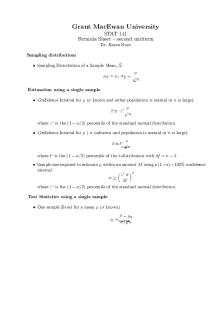
Lecture notes, lecture formula 2
- 1 Pages

2 Biodiversity - Lecture notes 2
- 33 Pages

Chapter 2 - Lecture notes 2
- 30 Pages
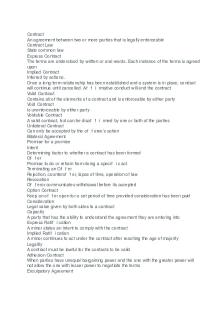
Blaw 2 - Lecture notes 2
- 4 Pages

Chapter 2 - Lecture notes 2
- 4 Pages
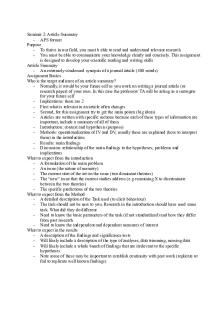
Seminar 2 - Lecture notes 2
- 2 Pages
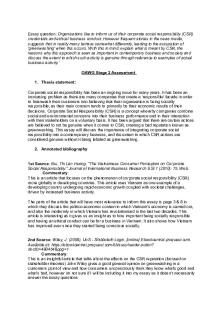
Stage 2 - Lecture notes 2
- 3 Pages
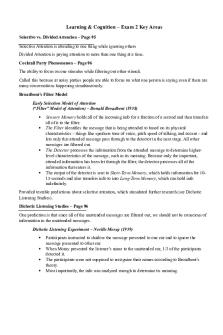
Exam 2 - Lecture notes 2
- 5 Pages

Lectia 2 - Lecture notes 2
- 3 Pages
Popular Institutions
- Tinajero National High School - Annex
- Politeknik Caltex Riau
- Yokohama City University
- SGT University
- University of Al-Qadisiyah
- Divine Word College of Vigan
- Techniek College Rotterdam
- Universidade de Santiago
- Universiti Teknologi MARA Cawangan Johor Kampus Pasir Gudang
- Poltekkes Kemenkes Yogyakarta
- Baguio City National High School
- Colegio san marcos
- preparatoria uno
- Centro de Bachillerato Tecnológico Industrial y de Servicios No. 107
- Dalian Maritime University
- Quang Trung Secondary School
- Colegio Tecnológico en Informática
- Corporación Regional de Educación Superior
- Grupo CEDVA
- Dar Al Uloom University
- Centro de Estudios Preuniversitarios de la Universidad Nacional de Ingeniería
- 上智大学
- Aakash International School, Nuna Majara
- San Felipe Neri Catholic School
- Kang Chiao International School - New Taipei City
- Misamis Occidental National High School
- Institución Educativa Escuela Normal Juan Ladrilleros
- Kolehiyo ng Pantukan
- Batanes State College
- Instituto Continental
- Sekolah Menengah Kejuruan Kesehatan Kaltara (Tarakan)
- Colegio de La Inmaculada Concepcion - Cebu



